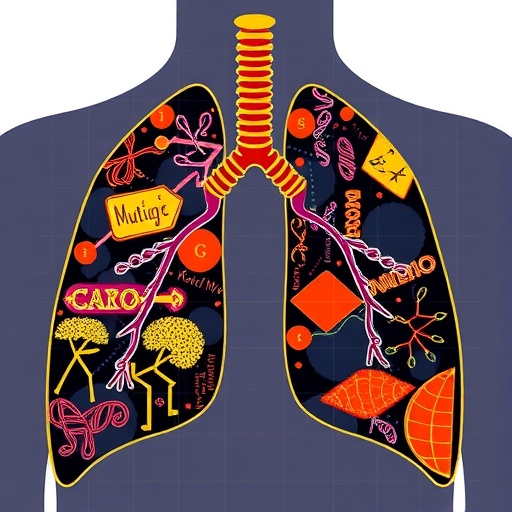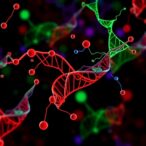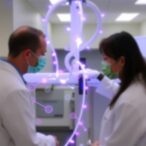
Lung cancer remains one of the leading causes of cancer-related mortality worldwide, traditionally linked to tobacco smoking. However, a significant and often under-recognized subset of lung cancer cases arises in individuals who have never smoked, known as lung cancer in never smokers (LCINS). This intriguing phenomenon accounts for roughly one-quarter of all lung cancer diagnoses, challenging researchers to unravel the distinct mutagenic forces that drive cancer development in this population.
A groundbreaking study recently published in Nature by Díaz-Gay and colleagues delves deeply into the genomic landscape of LCINS, employing data from the Sherlock-Lung study. This international effort analyzed the cancer genomes of 871 treatment-naive patients who had never smoked, recruited from 28 diverse geographic locations around the globe. This extensive dataset offers unparalleled insight into the heterogeneity of LCINS and sheds light on environmental and molecular contributors to tumorigenesis in the absence of direct tobacco exposure.
One of the most striking regional differences uncovered by the study is in the distribution of key driver mutations. In North America and Europe, mutations in the KRAS gene were identified at a rate nearly four times higher in adenocarcinomas among never smokers compared to their East Asian counterparts. Conversely, adenocarcinomas from East Asia demonstrated a notably higher frequency of mutations in the EGFR and TP53 genes. These mutational patterns underscore profound genomic and etiological diversity within LCINS populations worldwide.
.adsslot_0tlfA16anT{ width:728px !important; height:90px !important; }
@media (max-width:1199px) { .adsslot_0tlfA16anT{ width:468px !important; height:60px !important; } }
@media (max-width:767px) { .adsslot_0tlfA16anT{ width:320px !important; height:50px !important; } }
ADVERTISEMENT
The researchers also characterized the mutational signatures present within these tumors — unique base substitution patterns indicative of underlying mutagenic processes. Signature SBS40a emerged as the dominant contributor to single base substitutions in adenocarcinomas across cohorts, yet its etiological origin remains elusive. Interestingly, this signature was enriched specifically in tumors harboring EGFR mutations, hinting at potential unidentified environmental or endogenous factors facilitating these mutational events.
Intriguingly, the aristolochic acid-associated Signature SBS22a was almost exclusively detected in patients from Taiwan, reflecting regional exposure to this potent nephrotoxic and carcinogenic compound commonly found in certain herbal medicines. This observation elegantly illustrates how localized environmental carcinogens leave distinctive genomic imprints within populations, emphasizing the critical role of geography in cancer mutagenesis.
Contrary to earlier observational studies implicating secondhand smoke exposure as a causative factor in LCINS, the current investigation found no statistically significant associations between passive tobacco smoke and either specific driver mutations or mutational signatures. This finding challenges long-held assumptions and calls for a re-evaluation of the carcinogenic impact of secondhand smoke upon never smokers at the molecular level.
In stark contrast, air pollution exposure emerged as a powerful mutagenic force shaping LCINS genomes. Patients originating from regions burdened with elevated air pollution levels bore a higher likelihood of TP53 mutations and exhibited significantly shortened telomeres, markers indicative of increased genetic stress and genomic instability. These observations suggest that chronic inhalation of airborne pollutants may accelerate cellular aging and provoke DNA damage pathways that fuel oncogenesis.
Beyond individual mutational events, air pollution was linked to a broad rise in diverse mutation types. Significantly, there was a nearly four-fold increase in mutations characterized by Signature SBS4, a pattern previously tied to tobacco smoking but here plausibly attributed to polycyclic aromatic hydrocarbons and related carcinogenic compounds present in polluted air. Concomitantly, a 76% increase in the clock-like Signature SBS5 was observed, further corroborating the notion that environmental exposures expedite the accrual of somatic mutations over time.
Dose-dependent effects were evident, with greater air pollution levels correlating directly with shorter telomere lengths and higher mutational burdens, predominantly driven by SBS4 and SBS5. This clear gradient not only documents the intensity of environmental insult experienced by lung tissue but also establishes a mechanistic link between pollution-induced DNA damage and lung carcinogenesis in never smokers.
Taken together, these findings unravel multiple mutagenic processes at work in LCINS, illustrating that the disease is far from homogenous and intricately shaped by regional environmental exposures. Importantly, the lack of association between secondhand smoke and LCINS mutations redirects focus toward ambient air pollution as a major public health threat and mutagenic driver in populations not exposed to direct smoking.
The detailed genomic portrait provided by this study offers new avenues for precision medicine, emphasizing that lung cancer in never smokers requires tailored diagnostic and therapeutic approaches that consider geographical context and environmental history. It also underscores the urgency of global efforts to reduce air pollution as a modifiable risk factor capable of altering the molecular evolution of lung cancer.
Furthermore, the enrichment of distinct mutational signatures highlights the potential utility of genome-wide mutation profiling to identify underlying carcinogen exposures, enabling improved cancer prevention strategies and possible biomarkers of environmental risk. The elucidation of unknown signatures such as SBS40a remains a priority for future research to uncover novel mutagenic mechanisms.
In essence, the Sherlock-Lung study’s comprehensive assessment of lung cancer genomics in never smokers revolutionizes understanding of this disease subset. By integrating mutational signatures, driver mutations, and environmental data, it unravels how invisible and often overlooked carcinogenic forces sculpt cancer development beyond tobacco use. This knowledge paves the way for refined risk assessment, earlier detection, and ultimately enhanced outcomes for never smokers afflicted by lung cancer.
As air pollution continues to rise in many parts of the world due to industrialization and urbanization, the public health implications are profound. The study’s findings reinforce the imperative to enact stringent air quality controls and to incorporate environmental exposure histories into clinical practice. Such steps are crucial to mitigating the mutagenic burden that air pollution imposes and might reduce the global incidence of lung cancer among never smokers in the future.
In summation, lung cancer in never smokers represents a complex interplay of geography, environmental mutagens, and genomic alterations. This landmark research not only confirms the diverse origins of LCINS but also elucidates the powerful role that air pollution — rather than secondhand smoke — plays in shaping its mutational landscape. As scientific investigation continues, the hope is that these insights will drive transformative advances in both cancer prevention and precision oncology for this distinct patient population.
Subject of Research: The genomic landscape and mutagenic processes driving lung cancer in never smokers, with a focus on environmental exposures like air pollution and their impact on mutational signatures and driver mutations.
Article Title: The mutagenic forces shaping the genomes of lung cancer in never smokers
Article References:
Díaz-Gay, M., Zhang, T., Hoang, P.H. et al. The mutagenic forces shaping the genomes of lung cancer in never smokers. Nature (2025). https://doi.org/10.1038/s41586-025-09219-0
Image Credits: AI Generated
Tags: environmental factors in cancer developmentgenetic mutations in cancergenomic landscape of lung cancerheterogeneity of lung cancerinternational lung cancer studyKRAS mutations in adenocarcinomaslung cancer in never-smokersmutagenic forces in lung cancerregional differences in lung cancer mutationstobacco-free lung cancer casestreatment-naive lung cancer patientstumorigenesis without smoking



